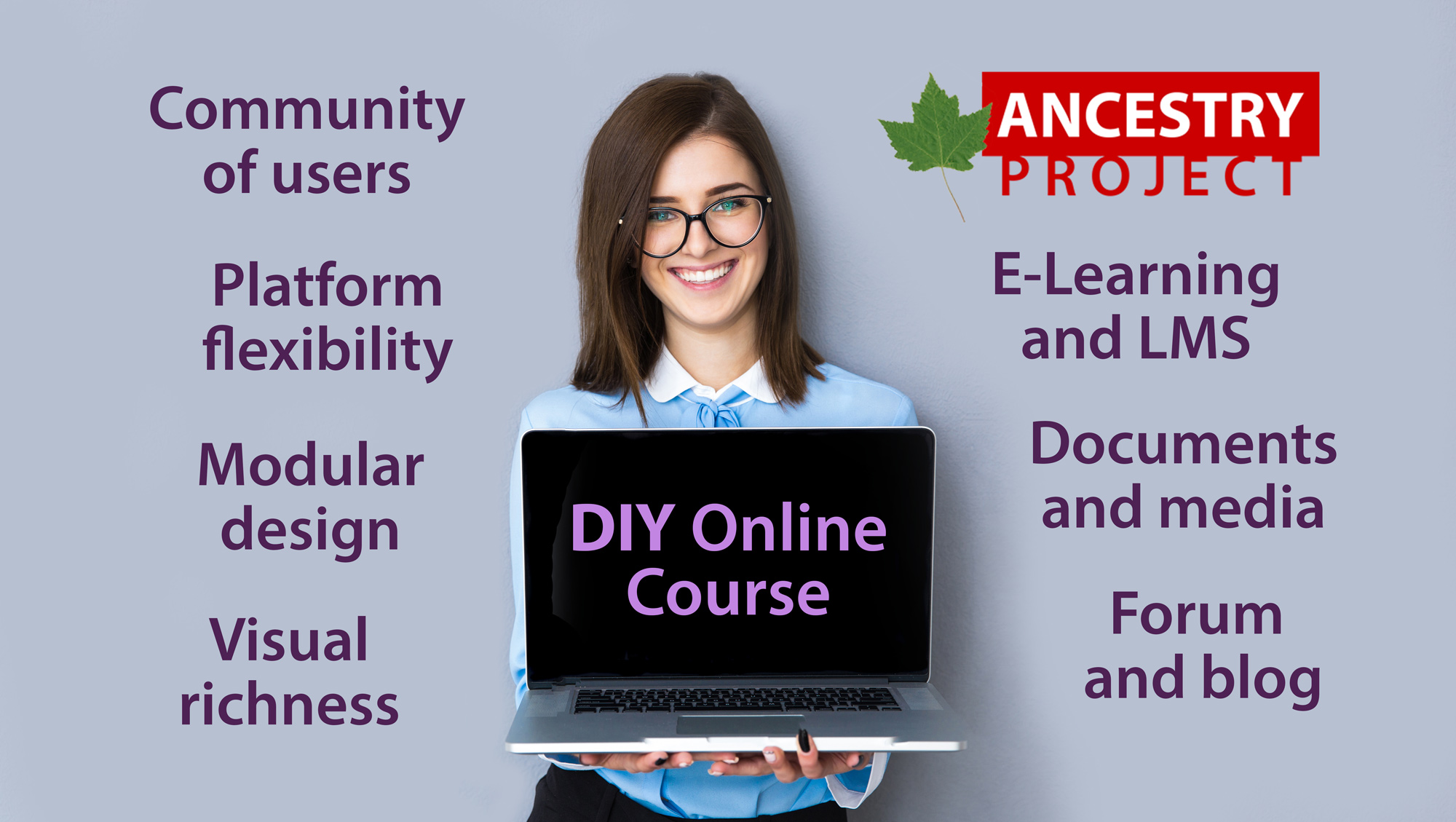
Thanks for visiting. This page supports my presentation at TESL Conferences throughout 2017.
Mike Simpson
Founder of Ancestry Project
This page contains a summary of some of the main points and provides resources and links if you’d like to try some things on your own.
Introduction
It would be beneficial for you to explore the Ancestry Project website before proceeding. Take a look in particular at the “Learn” section, which has the major content. To download PDFs and MP3s you’ll have to register. Registration is free.
Ancestry Project was created for two purposes. One, I wanted to develop a state of the art e-learning website with a community of users, forums, blog and online courses, and two, I wanted to continue my work with curriculum development. I’ve worked as an ESL teacher and designer/media producer so e-learning and content development are very interesting to me.
About WordPress
In my presentation I discuss the merits of using the full self-hosted WordPress. This version is the one you install on a web host like GoDaddy. It’s commonly referred to as WordPress.org. The alternative is WordPress.com which is free and easier to set up, but more restrictive.
WordPress is my choice because your website and learning portal can look beautiful. Unlike Moodle or other common LMS tools, WordPress is highly customizable and flexible (in my presentation I refer to the ability to engage in modular page design – more on that when I discuss the Divi theme). There are sophisticated tools for creating web pages with interesting looks and functions.
Costs: Web hosting is around $100 a year for basic shared hosting but you can pay more if you need a dedicated server and you need to deal with a high volume of traffic. Individuals or small institutions or businesses can probably get along fine with the basics. WordPress.com is free and not a bad place to start.
Plugins
WordPress is highly capable “out of the box” but plugins extend the basic functionality much further. As an educator you might want plugins to help you with class management or documents and media. You could install a calendar plugin and probably integrate it with Google Calendar or Outlook. You could install plugins to help with previewing and downloading PDFs and other document files. In my case I wanted to create a community site with e-learning functionality typical of learning management systems.
I turned to three main plugins:
- LearnDash (LMS, course management)
- Ultimate Member (Membership)
- wpForo (Forums)
These plugins provide the most important community and online course functionality. LearnDash allows you to host online courses inside WordPress. There are alternatives but LD seems to be the market leader.
Costs: While many plugins are free or cheap, LearnDash is approximately $150 US, Ultimate Member is free (you pay for extensions like MailChimp), and wpForo is free. There are free LMS plugins for WordPress. A basic one that’s free is called “WP Courses.”
Themes (Divi)
WordPress is amazing because so many of the themes look incredible. Find a style, layout and colour scheme that you like and with one click the theme is yours. Of course the magic lies also in making it your own. Many themes will allow varying degrees of customization. One of the best is Divi by Elegant Themes. The secret to Divi is the builder plugin (also available separately). You can create a page with different layouts of columns. Insert a section and row, create a full width header and then insert some modules in a 3-column row. High style and functionality.
Costs: Divi is about $100 US but many themes are free. If you want a theme that allows for infinite levels of customization you’ll have to pay for it. Divi is well worth it.
Alternatives
It is possible with a web hosting package to also install Moodle. Of course Moodle is very capable but unlike WordPress it is not known for its visual capability and often it is managed by IT staff. You can still try it yourself – I’ve used Moodle inside my own hosting accounts and after a number of hours I had some the basics of an online course set up.
I also have to recommend that you experiment with state of the art online learning management systems like Schoology or Edmodo. I’ve used Schoology a few times and its wonderful. It’s styled a little like Facebook and also has an emphasis on social learning. The free version allows you to set up 1 or 2 courses and is immediately rewarding. Take a look if you are interested in what is possible in the realm of professional and cutting edge LMS design.
Summary
In this article I’ve summarized most of the essential tools I’ve used with Ancestry Project. Though I’ve paid for plugins and themes you can find many for free. I’ve also paid for web hosting and services like an SSL certificate. If you have some experience with software and websites, or you are determined to create a professional website for e-learning I’d recommend the self-hosted WordPress route. You can also take a DIY approach. Just allow for time to experiment and learn, and make sure you have a backup system! (I backup inside GoDaddy and also use a plugin called UpdraftPlus which works in conjunction with cloud storage like Dropbox).
Good luck with your online learning endeavours and if you have a question please get in touch with me at mike at this domain. Thanks for reading!
Mike Simpson
0 Comments